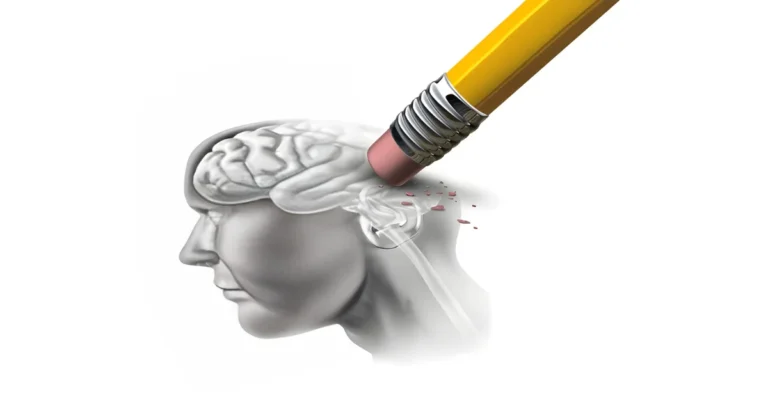How fear drives Anxiety disorders
Fear, an ancient and primal emotion, serves as both our protector and, at times, our captor. Vital for our survival in the face of danger, it becomes a weight that hinders our sense of peace when it becomes ingrained in our daily lives. While neuroscience has mapped the brain circuits responsible for fear, psychological frameworks reveal how our thoughts, experiences, and relationships shape its emergence and persistence. Together, these perspectives offer a deeper, more holistic understanding of this complex emotion, paving the way for better strategies to comprehend and manage it.
Fear: the biological trigger and mental creation
Fear, although rooted in our biology as a fundamental protective mechanism, transcends mere instinctive reactions. It emerges from a nuanced interplay between our perceptions, thoughts, and the life experiences that have shaped our personal histories. In other words, it is not the objective presence of danger alone that triggers fear, but rather how the brain interprets and assigns meaning to potential threats.
To illustrate, imagine being alone in a secluded house late at night. A muffled sound echoes, a creak or a snap. For an individual raised in a secure environment, this noise might be easily attributed to something benign, like settling wood or a gust of wind. Such a person might remain curious or even unperturbed. However, for someone who has witnessed or been a victim of burglary or assault, that same sound could trigger an alarm response. Adrenaline surges, the heart pounds, and hypervigilance takes hold. The stark contrast between these two reactions arises not from the sound itself but from its interpretation.
These rapid, often unconscious thoughts serve as a cognitive filter that can turn a neutral or ambiguous event into either a source of anxiety or, conversely, calm. Such interpretations reflect our core beliefs, which have formed over the years through our upbringing, experiences, and social influences.
A concept known as cognitive distortion highlights how certain biases can magnify fear. These distortions often include amplification, where potential threats are exaggerated, and overgeneralization, where a single negative experience is projected onto future situations. Together, they can transform trivial events into persistent sources of anxiety.
This interpretive process is also influenced by cultural and social factors. In some societies, phenomena like solar eclipses were historically viewed as omens of danger, and even in modern times, fears surrounding pandemics, economic crises, or natural disasters can ripple through entire communities. While these anxieties have roots in biological reality, they are intensified by collective narratives, media portrayals, and social discourse.
Neuroscience deepens our understanding of how cognitive interpretations affect the biology of fear. The amygdala, a key region that activates in the presence of a perceived threat, engages in constant dialogue with the prefrontal cortex, the area of the brain responsible for rational judgment. When the prefrontal cortex interprets a noise at night as harmless, the amygdala’s response remains subdued. Conversely, if the cortex deems the sound threatening, it heightens amygdala activity, setting off a cascade of physiological alarm responses.
This interplay between cognition and emotion becomes particularly pronounced in anxiety disorders. Individuals with these conditions often struggle to regulate amygdala hyperactivity through the prefrontal cortex, leading to prolonged fear responses even when no genuine threat exists. Catastrophic thinking, frequent in generalized anxiety or phobias, perpetuates this cycle by continually fueling the fear circuitry and making it harder to quell each new wave of alarm.
The emotional legacy of past experiences
Our past experiences do more than populate our memories; they sculpt our emotional responses and guide our behavior. Nowhere is this more evident than in the interaction between memory and fear. When we undergo a significant event, especially one charged with intense fear or pain, its imprint on the brain is deeper than a mere recollection. These experiences become woven into neural circuits where memory and emotion intertwine, amplifying each other’s impact.
Unlike simple factual archives, such memories carry personal significance derived from the narratives we construct to make sense of our lives. Consider someone traumatized by a car accident. Their subsequent fear of driving is not just about recalling the accident itself but also about the array of emotions, like helplessness or guilt, that accompanied it. These layers of emotion strengthen the association with fear, making the anxiety more difficult to overcome.
This process involves two primary structures: the amygdala and the hippocampus.
During a traumatic event, the amygdala, our emotional sentry, flags the experience as critical, prompting the hippocampus to encode it with exceptional detail. Thus, intensely emotional moments remain vivid in our memory, while relatively neutral events from the same time period may fade.
This heightened encoding, however, can become a persistent alarm system. Any reminder of the original event, perhaps a similar road, a recognizable sound, or even a particular smell, can resurrect the emotional memory, causing fear to flare up as though the danger were imminent. This phenomenon is notably apparent in post-traumatic stress disorder (PTSD), where flashbacks and intrusive recollections thrust a person back into the trauma’s emotional grip.
Often, these memories are tied to “emotional schemas” that shape how we respond to analogous situations in the future.
A person who experienced bullying might develop a schema of rejection, interpreting even neutral or kind comments from others as potentially threatening. Far from remaining static in the past, these emotionally charged memories actively mold our perception of and reactions to present-day events.
Despite their profound influence, past experiences and their emotional residues are not immutable. Modern therapies provide strategies for reworking these memories and their associated fears. Exposure therapy, for instance, enables individuals to revisit traumatic memories within a safe, controlled setting. Through gradual re-exposure, the brain can learn to diminish the amygdala’s response and reframe the memory with less threatening significance. Such interventions effectively loosen the link between the memory and the fear it evokes, allowing the experience to be reintegrated into one’s broader autobiography with a reduced emotional burden.
Hence, the dynamic between memory and fear is a complex synergy of recollection and emotion. While intense memories can lock us into patterns of anxiety, they can also become catalysts for resilience and growth if we manage to rewrite their narratives in more empowering ways.
Fear: a mirror reflecting our deepest needs
Modern psychology offers a transformative view of fear: it is not merely an enemy to vanquish or an obstacle to bypass, but a messenger bearing vital information about our unmet needs, insecurities, or inner conflicts. Though it can be distressing, fear’s principal function is to direct our awareness toward areas in our lives that demand attention. When we neither flee from nor repress fear, but rather engage with it, we can discover its origins and harness it as a catalyst for self-awareness and personal development.
Take chronic anxiety as an example. An exaggerated fear of failure may point to a deep-seated desire for recognition or an urgent need to maintain a positive self-image. Someone who fears the future or the unknown may crave stability in an environment perceived as chaotic or uncertain. Recognizing fear in this light shifts our perspective: rather than viewing it as a defect to be “fixed,” we can interpret it as an internal compass guiding us toward our most pressing psychological needs.
This approach also underscores the role of environment and relationships in shaping our fears. Early interactions, especially those involving parents or caregivers, lay the groundwork for our worldview. Unstable or overly critical relationships, for instance, can foster a mindset in which the world is perpetually threatening. Even seemingly minor traumas, a harsh comment, an accident, or a vulnerable moment, can leave a deep imprint on our cognitive and emotional patterns, forming an “emotional filter” through which all subsequent experiences are judged. Thus, a person who felt abandoned as a child may carry an ever-present fear of abandonment into adulthood, even in relationships that are genuinely secure.
Such schemas, which often operate beneath conscious awareness, magnify perceived threats and make it harder to respond calmly or rationally. Someone conditioned to see the world as dangerous may anticipate harm around every corner, perpetuating a cycle of anxiety.
Recent studies confirm that fear arises from a complex web of thought processes, lived experiences, and personal narratives. However, by actively acknowledging and reframing it, and by working to rewire the brain’s response, we can transform fear from a paralyzing force into a wellspring of resilience.
In this sense, fear can become our ally, a guide that compels us to explore our boundaries, adapt, and evolve. When we understand and reinterpret our fear, it ceases to be an adversary to obliterate or a destiny to endure. Instead, it becomes a messenger, an inner compass illuminating crucial needs and untapped strengths. Embracing this deeply human perspective grants us a valuable key to self-awareness and emotional growth. By learning to work with our fear, we not only move closer to inner peace but also open ourselves to a richer, more fulfilling life.
References








